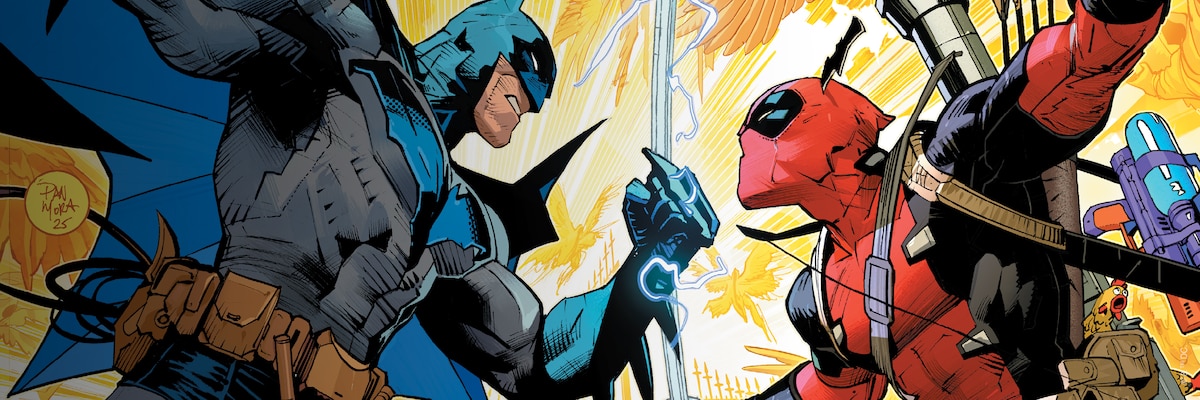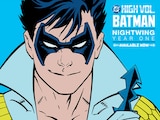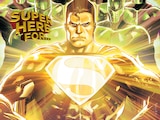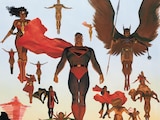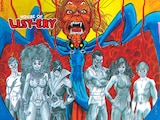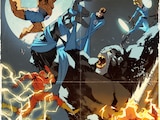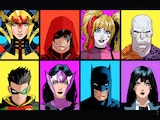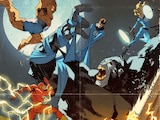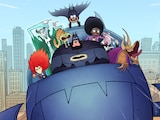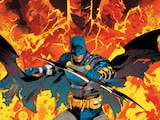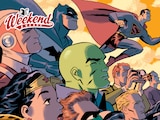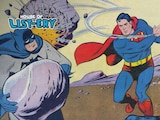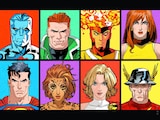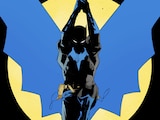For every action, there is an equal and opposite reaction. Every positive has its negative, and every icon has its match. So, in this titanic moment when DC and Marvel have once again crossed paths, it seems only natural that DC’s most indomitable hero, the Batman of Gotham City, face off against…
Wait… Deadpool? Really?
In crossovers past, we’ve seen Batman go up against the likes of Captain America, Wolverine and Daredevil. But going against a regenerating mercenary where the only things higher than his kill count are his awareness of his own fictional nature, his ability to instantly explode any sense of decorum and his general libidinousness…well, that’s a first. But you can’t deny the man has star power. In fact, that’s about the only thing he and Batman would seem to have in common.
So, if it's not the Caped Crusader, then who is DC’s Deadpool? (Sorry, Batman, this article’s not about you anymore. You can sit one out.) We’ve been thinking about this a lot lately, and there are a few ways you could really go about addressing it. Let’s round up our unusual suspects.
THE DEADBEAT DAD

Deadpool, real name Wade Wilson, created in 1990, is a deadly mercenary with regenerative powers who wears a two-tone mask which covers his entire face. Meanwhile, the DC Universe has Deathstroke, real name Slade Wilson, created in 1980, a, uh…deadly mercenary with regenerative powers who wears a two-tone mask which covers his entire face.
Okay, they’re certainly similar physically, but on a personality level, Wade and Slade are polar opposites. In fact, Joe Kelly suggests exactly this in Superman/Batman Annual #1, where Deathstroke’s morally flipped counterpart from the antimatter universe is a dead ringer for Deadpool. Our aesthetic match? Maybe. But the roles they fill in their respective universes are very different.
MAKE ’EM LAUGH
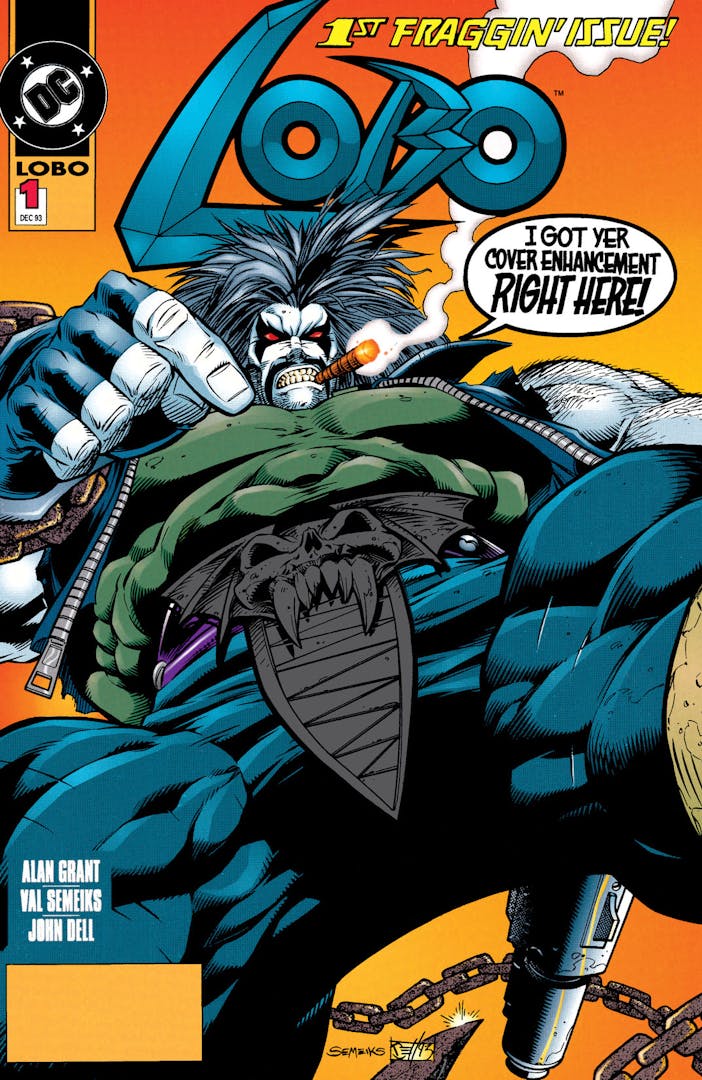
More than his background as a mercenary, what defines Deadpool in the Marvel cosmology is his role as comic relief—someone who wins his battles and the audience alike with his sense of humor and irreverence for the genre in which he exists. The Creeper, a creation of former Marvel phenom Steve Ditko, fits the bill of an unhinged hero who fights crime with insanity as his greatest weapon. Deadpool-style irreverence is often a role that the pliable Plastic Man has been molded into over the years as well (though his original adventures, while still some of the funniest superhero comics of the Golden Age, carried a very different tone). If we’re bringing WildStorm into the fold, the attitude-driven ’90s flair of characters like Grifter fit the bill.
Though perhaps there’s another hero—or, anti-hero—we should look to. It’s long been industry lore that when Marvel’s Stan Lee was asked who his favorite DC character was, he would have a surprising answer: Lobo. As a living self-parody of the musclebound, machismo-drowned state of the comic book zeitgeist in the 1990s, Lobo had become the perfect self-aware, hyper-exaggerated takedown of comics at the time—in much the same way that Deadpool often provides that same commentary directly to the reader.
FOURTH WALL-CRAWLER

But let’s narrow our focus here. There are a lot of ways for a funny character to be funny. Let’s talk about not just Deadpool’s capacity for humor, but the kind of jokes he makes—jokes which have no problem upending the narrative to talk to the reader directly, acknowledging his own fictitious nature as a comic book character. It’s a good bit. And one that DC made its mark on with a Keith Giffen-created character named Ambush Bug.
Speaking frequently on behalf of the writers to their tyrannical, mostly unseen editors, Ambush Bug was a nuisance mouthpiece who existed alongside the likes of Batman and Wonder Woman, but felt more like a man from our own world. Still, the comparison doesn’t feel quite right. Why? While both Ambush Bug and Deadpool “break the fourth wall,” the way they do it has a different context. Ambush Bug is the belabored advocate of the worker for hire, commiserating in their toil. Deadpool mouths off on behalf of the fans, who keep buying his comics.
But there’s also the fact that nobody knows who Ambush Bug is. Okay, maybe you, the regular reader of DC.com, know who he is. But count up the number of Deadpool tattoos versus Ambush Bug tattoos and you’re going to find a pretty wide discrepancy. Even Bat-Mite admits, in the finale of Batman: The Brave and the Bold, that Ambush Bug is “obscure even for this show.” To compare them wouldn’t be fair to the cache that Deadpool has in comics culture today. Which, actually, may be a reason to do it, but we digress.
THE INTENTIONAL PARODIES

Red Tool, one of the major supporting characters in Amanda Conner and Jimmy Palmiotti’s Harley Quinn work, is very obviously inspired by Marvel’s Merc with a Mouth. The often cheeky Priest crafted his own counterpart in “Death Masque,” one of the inmates at Arkham Asylum and few allies of Slade Wilson in his own Deathstroke saga. Grant Morrison themself, author of the main story in the new Batman/Deadpool, even reimagined the undying ’60s Batman villain Lord Death Man as an unhinged Deadpool-like figure in their Batman, Incorporated. But saying a parody of a character who already primarily exists for comedy is DC’s closest equivalent of that character? Well, that’s just way too easy, isn’t it?
AN OBLIGATORY FOOTNOTE
Before we reach our conclusion, for the pedants out there (love you guys—you’re the ones who keep me writing), yes, we are aware that in the “Amalgam” line of comics from 1996, Deadpool was already directly matched with Deadline, a third stringer Starman villain and lesser-known mercenary with barely enough name recognition to even qualify for the Suicide Squad. Suffice to say that 29 years ago, Deadpool did not enjoy the status in popular culture he does now, and that pairing never would have flown today. Okay. All good? Back to the article.
AND THEN, THERE’S HARLEY QUINN
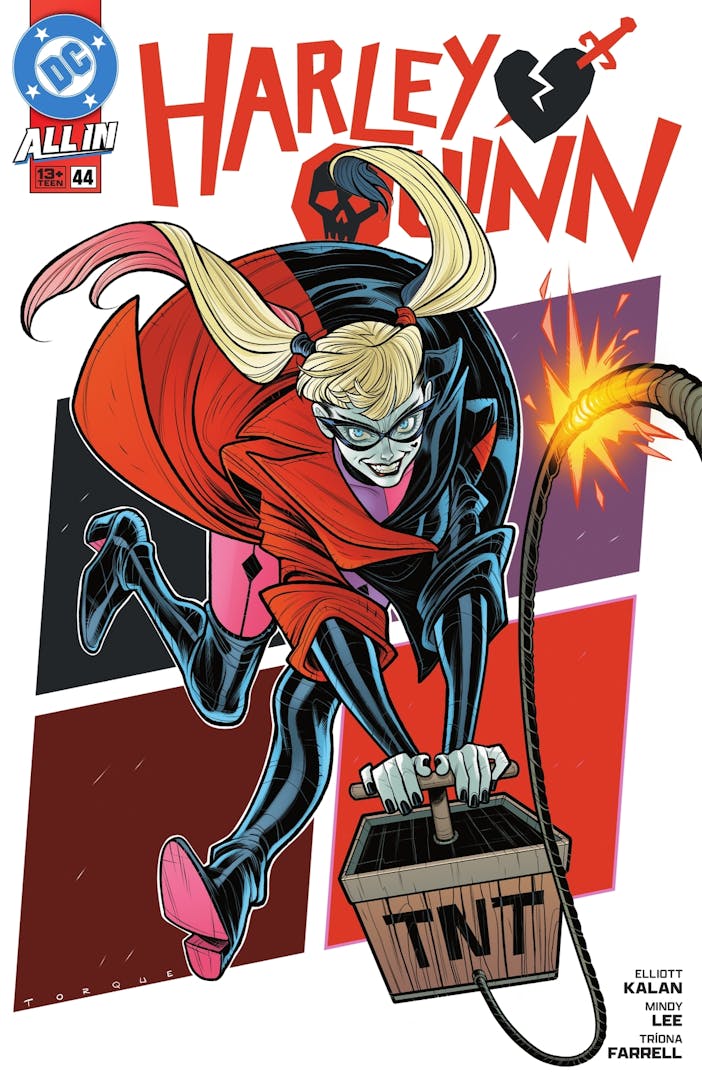
Here we are at the end of our exercise. Your No-Prize is in the mail if you saw this one coming. Forget about aesthetics, or intentionality, or the fourth wall. Let’s talk about utility. Who does DC Comics use the same way that Marvel uses Deadpool? We’re talking about a character who’s become a source of levity for the entirety of the DC Universe beyond the bit supporting part they were designed for. Maybe they’ve even been in a few movies to this exact end. Or, say, a five-season TV show. Maybe they have a laissez-faire attitude towards grisly murder, a generous pansexual libido and often have a penchant of wriggling their way into team-ups they have absolutely no serious business being a part of. Perhaps they’re also a character whose clowning both covers a deep sense of pain and a lingering personal trauma that all their acting out is an ongoing attempt to work through. If you haven’t thought about Harley by now, you’re not really thinking about the question at all.
The case is there to be made, but it’s not precisely one-to-one. Harley doesn’t have that same comic book awareness (usually), and the typical fans of either character, while they do have an overlap, aren’t the exact same sort of fan either. We are not here to say that Harley Quinn is literally Deadpool.
However, both Harley Quinn and Deadpool are pretty much Bugs Bunny.
Get at me over in the DC Community.
DC/Marvel: Batman/Deadpool #1 is now available in print and as a digital comic book.
Alex Jaffe is the author of our monthly "Ask the Question" column and writes about TV, movies, comics and superhero history for DC.com. Follow him on Bluesky at @AlexJaffe and find him in the DC Official Discord server as HubCityQuestion.
NOTE: The views and opinions expressed in this feature are solely those of Alex Jaffe and do not necessarily reflect those of DC or Warner Bros. Discovery, nor should they be read as confirmation or denial of future DC plans.
